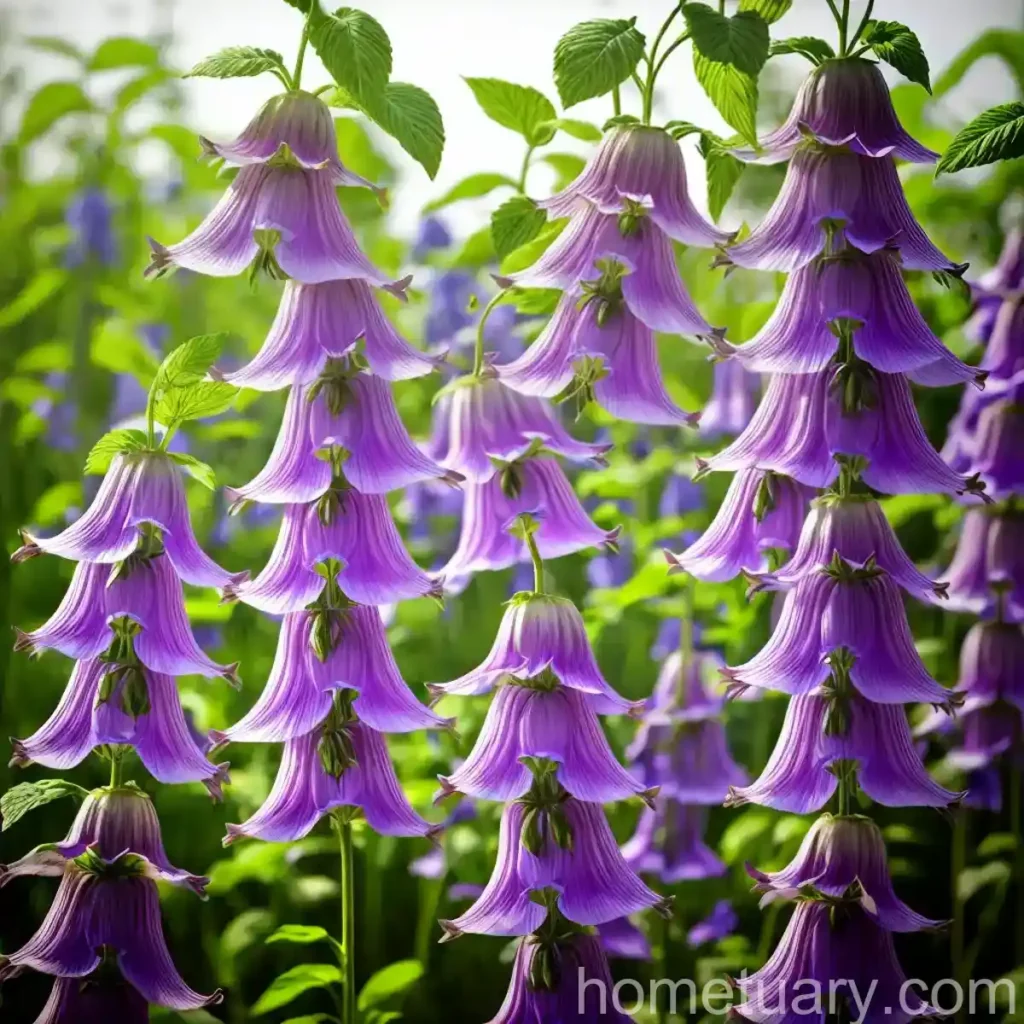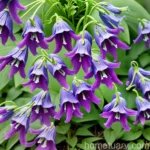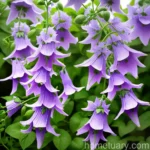Tall Bellflower (Campanula Americana) Care Guide
Tall bellflower, scientifically known as Campanula Americana, is a stunning addition to any garden or landscape. This native North American plant belongs to the Campanulaceae family and is admired for its vibrant, bell-shaped flowers. From its fascinating characteristics and versatile uses to its unique habitat requirements, this comprehensive care guide explores all aspects of growing and maintaining the tall bellflower plant.
What is Tall Bellflower?
Tall bellflower, or Campanula Americana, is a perennial herbaceous plant known for its upright growth habit and beautiful flowers. It is native to North America and can be found in various natural habitats, including moist woods, meadows, and along streams. This plant is characterized by its clustered, bell-shaped flowers that bloom in shades of blue, creating a striking display in gardens and natural landscapes.
Key Takeaways
- Plant Name: Tall Bellflower (Campanula Americana)
- Family: Campanulaceae
- Native Habitat: North America
- Flower Color: Blue
- Growth Habit: Upright, herbaceous perennial
- Blooming Season: Late spring to early summer
Culture
Tall bellflowers are relatively easy to cultivate, making them a popular choice for gardeners seeking to add a touch of natural charm to their outdoor spaces. To ensure the successful growth and development of tall bellflowers, it is essential to understand their cultural requirements, including water, sunlight, fertilizer, soil, and pruning needs.
Uses
Tall bellflowers are valued not only for their ornamental beauty but also for their versatile uses in various settings. Whether used in landscaping, cut flower arrangements, or even herbal remedies, this plant offers a range of practical and aesthetic applications.
Water
Providing adequate water is crucial for the healthy growth of tall bellflowers, especially during their active growing season. While they prefer consistently moist soil, these plants are also sensitive to waterlogged conditions, so proper drainage is essential.
Sunlight
Tall bellflowers thrive in partially shaded to fully shaded areas, making them an excellent choice for gardens with limited direct sunlight. However, they can tolerate some morning sun, especially in cooler climates.
Fertilizer
Applying a balanced, all-purpose fertilizer in the spring can help support the growth and blooming of tall bellflowers. Organic fertilizers, such as compost or well-decomposed manure, can also be beneficial for enhancing soil fertility.
Soil
Well-drained, humus-rich soil is ideal for tall bellflowers. A slightly acidic to neutral pH level is preferred, and incorporating organic matter into the soil can improve its structure and fertility.
Pruning
While tall bellflowers do not require extensive pruning, deadheading spent flowers can encourage prolonged blooming and maintain a tidy appearance. Additionally, removing any damaged or diseased foliage can promote overall plant health.
Propagation
Propagation of tall bellflowers can be achieved through various methods, such as division, seed sowing, or even stem cuttings. Each approach offers unique benefits and considerations, allowing gardeners to choose the most suitable method based on their preferences and resources.
Container Popularity
Tall bellflowers are well-suited for container gardening, providing a charming and versatile option for adding height and visual interest to potted arrangements. Their adaptability to container growth makes them an attractive choice for urban and small-space gardens.
Common Diseases
As with many plants, tall bellflowers are susceptible to certain diseases that can impact their overall health and appearance. Understanding common diseases and their potential management strategies is crucial for effectively caring for these beautiful plants.
Disease Diagnosis
Common diseases that may affect tall bellflowers include fungal infections, such as powdery mildew and leaf spot diseases, as well as bacterial rot. Identifying the specific symptoms and signs of disease can aid in prompt diagnosis and targeted treatment.
Common Pests
Pests can pose a threat to the well-being of tall bellflowers, as they may feed on the foliage, flowers, or stems, leading to aesthetic damage or even compromising the plant’s vitality. Implementing preventive measures and early intervention strategies can help minimize pest-related issues.
Botanist’s Tips
Experienced botanists and horticulturists often provide valuable insights and tips for successfully cultivating and caring for tall bellflowers. From practical maintenance advice to creative design ideas, these expert recommendations can enrich the gardening experience and contribute to the optimal growth of these plants.
Fun Facts
Uncovering intriguing and lesser-known facts about tall bellflowers can enhance the appreciation for these captivating plants. From their historical uses to their ecological significance, fun facts offer a deeper understanding of the unique attributes and contributions of tall bellflowers.
Links to External Resources
For more in-depth information and resources on tall bellflowers, refer to the following:
- The American Campanula Society
- North American Native Plant Society
- Royal Horticultural Society: Bellflowers
As evidenced by its charming flowers and versatile characteristics, tall bellflower (Campanula Americana) holds significant appeal for both seasoned gardeners and plant enthusiasts. By incorporating the considerations and insights presented in this comprehensive care guide, individuals can embark on a rewarding journey of cultivating and nurturing these captivating plants in their own outdoor spaces.















